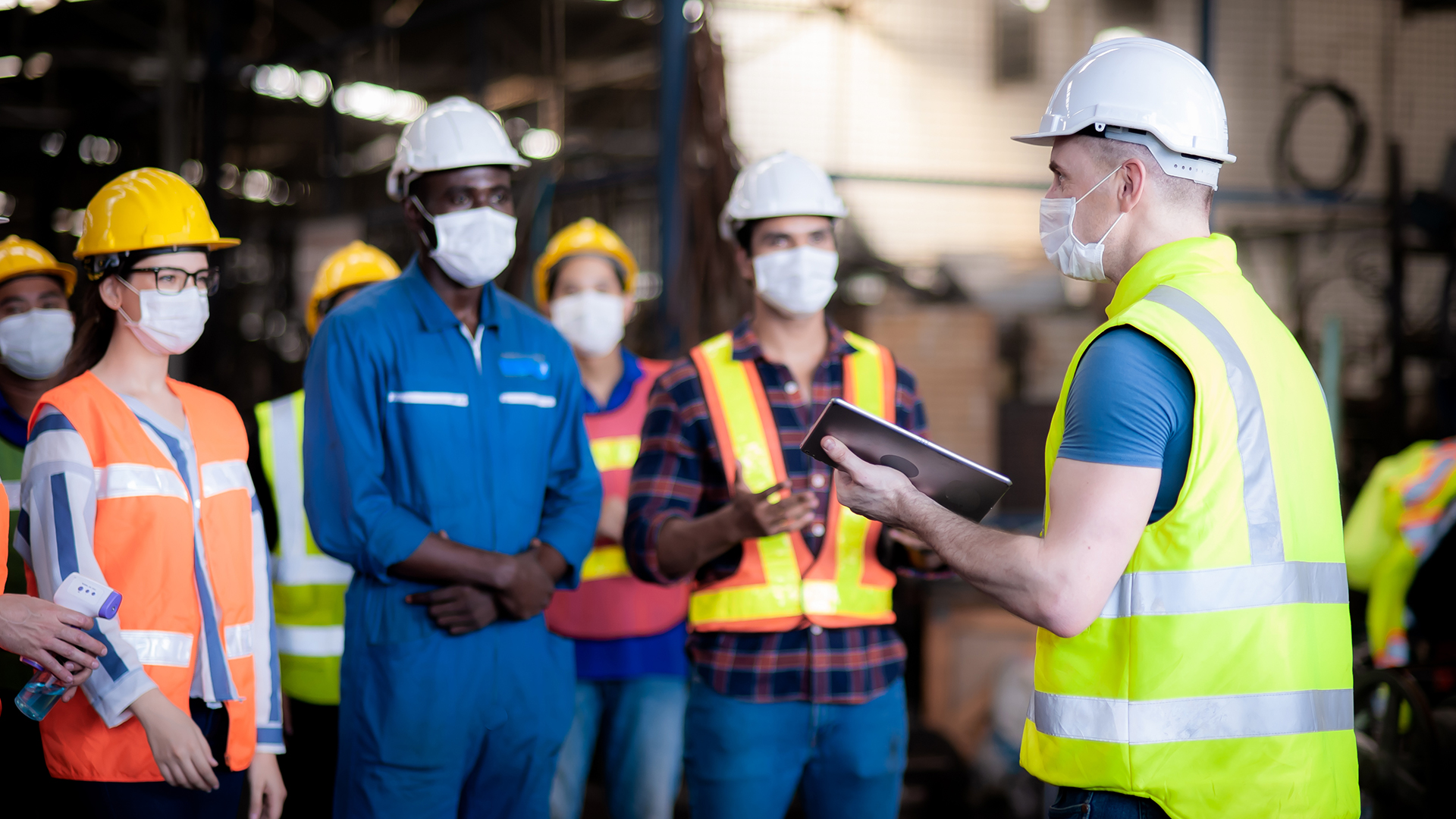At SECURE, our number one goal is that all employees, contractors and partners "Go Home Safe". We are guided by our policies and procedures, but act on our choices. Our culture is built on what we call “Level 5 Safety” (L5S). Our shared values of working safely are measured by the steps demonstrating these values.
SECURE uses a key performance indicators (KPI) model of tracking and controlling all incidents, including near-miss reporting. We knowledge share safe practices at all levels, encouraging everyone to remember why they work safely. The intention of Level 5 Safety is to reach the fifth level by promoting safe behaviours and increasing the proactive measure of employees when it comes to safety.
In plain language, here are the 5 Levels of Safety:
- Level 5 – Safety is at the forefront of our business
- Level 4 – Safety is engrained in our leadership and values
- Level 3 – Safety systems build the foundation for the safety program
- Level 2 – Safety is doing the right thing when incidents happen
- Level 1 – Safety program meets compliance
It’s important to note, for an effective L5S program, each level builds upon the last and is necessary to reach L5S.
How does L5S apply during a pandemic?
Safety is and always has been at the forefront of all our decisions, that doesn’t change. As we manage living and working with the COVID-19 pandemic, what happens is we become more detail minded as it relates to L5S. To effectively manage the safety of our employees, contractors and vendors, a solid safety foundation is required to respond, monitor, be proactive and anticipate the future. L5S at SECURE mirrors the progression of our emergency management program in the response to a pandemic.
Level 1 – The Foundation: having a consistent emergency response plans across the company.
SECURE’s emergency management and security lead at SECURE describes the process to implement the upgrading of our Emergency Response Plans (ERP):
“In 2019, we upgraded the ERP and aligned the Corporate ERP with our Corporate Emergency Support Team (EST) to ensure that they were compliant with the Incident Command System (ICS) standard used by all emergency support providers across North America.”
Training is an important foundation in implementing ICS with SECURE’s frontline responders, and drills and exercises were conducted by the HSE Advisors with facility staff. When COVID-19 ramped up, the safety team was in the midst of rolling out the Corporate ERP to executive, managers and the Corporate EST.
Level 2 – Reacting: safety is doing the right thing when incidents happen.
On March 11, 2020, when the World Health Organization (WHO) declared COVID-19 a pandemic, it was becoming a serious concern much closer to home and SECURE responded.
- The Executive team stood up our Emergency Operations Centre (EOC) and activated our EST. Early on, things were changing hourly.
- Our Communications team worked overnight following the WHO announcement of COVID-19 becoming a pandemic and its impact to our business and developed messaging for the Executive to review and go out to the organization.
- Many discussions took place around how to best respond and stay ahead of the pandemic to ensure a safe workplace for our people and to ensure business continuity for our customers, shareholders and employees.
Level 3 – Planning: reporting, tracking, monitoring.
Following the guidance from the WHO and the province’s chief medical officers, the EST recommended making changes to how many employees work and systems were put in place to manage safety. Some of these systems include technology, such as Microsoft Teams, which is helping keep everyone connected. Every morning, daily meetings were held by the EST with updates following the ICS structure. Communications stayed up-to-date by monitoring the news and changes to the situation daily and provided reports to the EST. Communications drafted daily organizational updates based on current events and the impact to our business.
Level 4 - Proactive: analyzing information coming in and anticipating what might come next.
“Based on what we saw happen around the world and in other provinces, we knew a stepped approach was needed to ensure the safety of our employees while still being able to execute their job responsibilities,” says SECURE’s senior advisor for HSE and sustainability.
Anticipating that only essential services would continue to operate, the next step was ensuring our business was considered an essential service. SECURE took the initiative to get in front of government officials to ensure the continuity of the business.
In the field, operations took steps to minimize the transmission of COVID-19 in the workplace by implementing physical distancing through virtual safety meetings, electronic transfer of truck tickets, self-assessments and increased cleaning protocols. Office staff were encouraged to work from home next. Where people were going into the office, it was closely monitored as to who who was coming and going to ensure everyone was safe in the event of an emergency.
Level 5 – Leading Edge: safety is at the forefront.
As an organization always striving for L5S, there are several tactics that can be implemented in a pandemic that sets up for success now and in the event of future emergencies. One of these tactics is using advanced analytics to set innovative targets. One example of this is using an electronic process for assessment screening prior to going to a customer’s job site. SECURE now has internal systems using this process to help screen employees coming on shift to ensure the safety of all those onsite.
As an organization striving to consistently be a L5S company, we are always working towards continual improvement. With continual improvement comes important learnings. When this pandemic comes to pass, a thorough debrief will be conducted to ensure we can learn from this experience.




